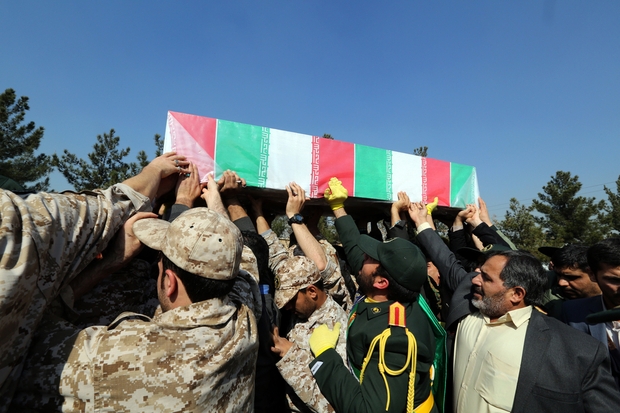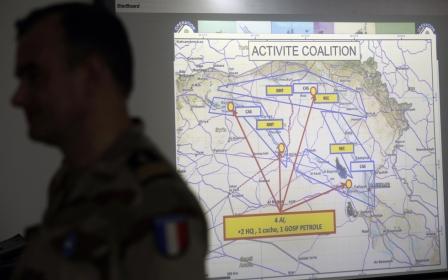Aleppo offensive exposes shortcomings of Iran's strategy in Syria

By all credible accounts Syria’s five year civil war is at a critical turning point with the balance of power firmly stacked in favour of the government and its allies.
The looming siege of Aleppo – widely seen as the heartland of the rebellion - marks the most important tactical and operational development in the war as it speaks to the depletion of the armed rebellion against the Syrian state.
The Syrian war may drag on for years to come but it is now unlikely to produce any outcome that accommodates even the minimal demands of the armed opposition.
Whilst the Aleppo offensive has thrown up a wide range of immediate concerns, notably refugees, and produced a half-hearted agreement to partially halt fighting in the coming days, the medium and long-term consequences of the rebellion’s collapse have rarely been considered.
The end game of the Syrian civil war is a high-stakes arena for all the states involved, but it poses a set of uniquely difficult challenges for Iran, the state which has by far expended the greatest amount of blood and treasure in the conflict.
The Islamic Republic has played a central role in the survival of the Syrian state and has been instrumental in forging a winning strategy in the war. Nevertheless, absent careful management of the challenges ahead, Iran risks losing the peace.
Battle of Aleppo
The mainstream Western media has credited the phenomenal success of the Syrian offensive north of Aleppo primarily to Russian air strikes. Whilst there are lazy references to allied militias, notably Lebanese Hezbollah, there appears to be little or no mention of Iran’s direct role in the latest offensive.
Whilst Iran’s involvement in the latest offensive is less intense than a series of offensives south of Aleppo beginning in October 2015, nevertheless Iranian combatants are directly involved and several have been killed in the past two weeks.
The most important casualty is Islamic Revolutionary Guards Corps (IRGC) Brigadier General Mohsen Qajarian - commander of the Neyshapur-based 21st Armoured Brigade – who was killed in the battle to break the siege of the Shia towns of Nubl and Zahra.
Other notable casualties include IRGC officers Mohammad Hossein Seraji and Seyed Sajjad Roshanayi - both from the 17th Imam Ali Ibn Abi Taleb Battalion - who were reportedly killed in the battle to break the siege of Nubl and Zahra.
However, the casualty rates in the latest offensive are far lower than the offensives south of Aleppo in October 2015 when scores of Iranian combatants were killed in the space of three weeks.
The intensity of Russian air strikes notwithstanding, these casualty figures reflect the depth of Iranian involvement. The offensives south of Aleppo were Iranian-led and up to 2,000 Iranian combatants may have taken part in them.
By contrast, the IRGC appears to have adopted a more advisory capacity in the latest offensive, in part to avoid the unacceptable losses of earlier offensives.
Retaking Aleppo and the countryside around it has been a key Iranian battlefield objective since 2013 and the events currently unfolding, notably the collapse of rebel morale, appears to be a vindication of that strategy.
The recent victories, notably the lifting of the siege of Shia towns north of Aleppo, which are of great psychological if not strategic value, have emboldened IRGC commanders to imagine a looming final victory in Syria.
Leading the charge is Brigadier General Hossein Salami, the second in command of the Revolutionary Guards, and the IRGC’s chief strategist, who claims that the recent victories have “changed the fate of regional and international political equations on Syria”.
Losing the peace
The tone of triumphalism from IRGC commanders and strategists is understandable in so far as their strategy has proved to be successful.
As of early 2013, when the IRGC presence in Syria expanded beyond the Qods expeditionary force, the Revolutionary Guards have concentrated their forces in two regions: the southern Aleppo countryside and the Quneitra province abutting the occupied Golan Heights.
This concentration reflects clear-eyed strategic calculation and political intentions. Spearheading an offensive in the Aleppo countryside, widely perceived to be the heartland of the armed rebellion, places the IRGC in the eye of the storm. Meanwhile, the strong presence in Quneitra sends a signal to Israel in addition to protecting this sensitive area from rebel penetration.
At a broader level, the concentration of force in sensitive areas reflects the IRGC’s intention to stay in Syria long after the major fighting has subsided.
But the end game may prove to be much more complicated than IRGC strategists imagine. For a start there is an emerging misalignment in the position of key actors in the pro-Syria camp.
The Syrian government, supported by its Russian ally, appears to be set on scoring battlefield victories in quick succession with a view to securing local ceasefires on favourable terms.
The Iranians prefer a more drawn out process, and whilst securing a quick victory in Aleppo is important, nevertheless from the Iranian point of view there is a lot of hard fighting left in Syria, not least in the northern Hama countryside, the al-Ghab plain and Eastern Ghouta.
Indeed, the configuration of Iranian military posture in Syria, comprised of multiple militias and spearheaded by the IRGC, speaks to a multi-layered military strategy designed to win and hold territory.
At a political and diplomatic level, Iran risks being eclipsed by Russia’s superior political weight and diplomatic capacity. This problem is brought into sharp relief in the context of the international community’s chief concern in Syria, namely the containment and defeat of the so-called Islamic State (IS) group.
The current Iranian strategy, largely developed by the IRGC, envisages consolidating control over western Syria, with little effort expended on re-integrating the east into the Syrian state.
This strategy does not adequately address the threats emanating from the multiple conflicts in eastern Syria which involve the IS group, other rebel factions and the Kurds.
Most important of all, this approach is ill-prepared to accommodate sudden developments in the east, for instance the reported intention of Saudi Arabia to deploy combatants in the east of Syria ostensibly to fight the IS group.
Whilst the IRGC’s chief strategist Brigadier-General Salami is scornfully dismissive of Saudi Arabia’s military ability, the fact remains that Iran and the Assad government are in effect impotent to halt the de facto partition of Syria on the initiative of Saudi Arabia, Turkey and their Western allies.
- Mahan Abedin is an analyst of Iranian politics. He is the director of the research group Dysart Consulting.
The views expressed in this article belong to the author and do not necessarily reflect the editorial policy of Middle East Eye.
Photo: Members of the Iranian Revolutionary Guard carry the caskets of Iran's Revolutionary Guards Brigadier General Mohsen Ghajarian and other Iranian fighters who were killed in the northern province of Aleppo by Syrian rebels, during their funeral procession in the capital Tehran, on 6 February, 2016 (AFP).
Middle East Eye propose une couverture et une analyse indépendantes et incomparables du Moyen-Orient, de l’Afrique du Nord et d’autres régions du monde. Pour en savoir plus sur la reprise de ce contenu et les frais qui s’appliquent, veuillez remplir ce formulaire [en anglais]. Pour en savoir plus sur MEE, cliquez ici [en anglais].





